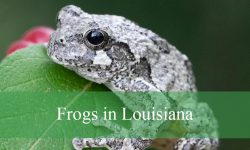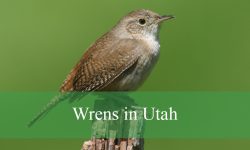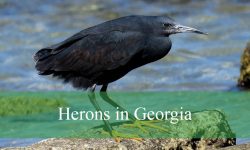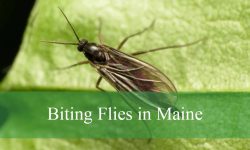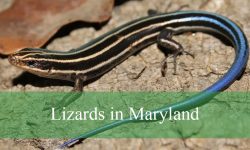Wisconsin is home to a surprising variety of insects and arachnids, some of which can be harmful to humans. From brightly colored Velvet Ants to venomous spiders and aggressive stinging insects, knowing which bugs to watch out for is essential for outdoor safety. Seasonal activity and habitat preferences make certain species more common during summer months.
Ticks and mosquitoes in Wisconsin can carry diseases such as Lyme disease and West Nile virus, making preventive measures crucial for hikers, gardeners, and pet owners. Meanwhile, stinging insects like Yellowjackets, European Hornets, and Paper Wasps are known for their painful stings and potential to trigger allergic reactions. Awareness and caution can help reduce encounters with these bugs.
Invasive species, including the Spotted Lanternfly and Brown Marmorated Stink Bug, pose less direct danger to humans but can harm crops and plants. Other less common but noteworthy species, like Assassin Bugs, Blister Beetles, and Giant Water Bugs, may cause painful bites or skin reactions. This guide covers the most dangerous bugs in Wisconsin and offers practical tips for identifying and avoiding them.
Different Types of Dangerous Bugs in Wisconsin
Velvet Ant (Mutillidae family)
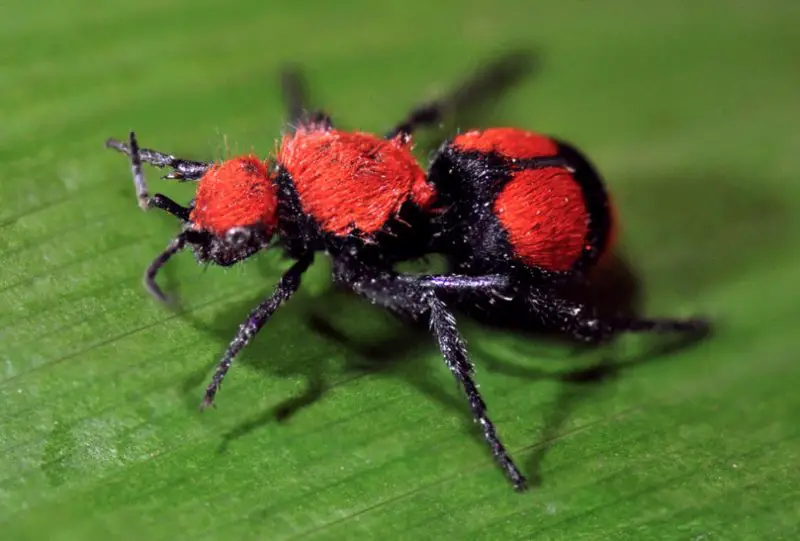
The Velvet ant, often called the “cow killer,” is not actually an ant but a wingless female wasp. It has a striking appearance, with bright red or orange fuzzy bodies and black markings that serve as a warning to predators. Males, however, have wings and are harmless to humans.
Velvet Ants are solitary and ground-dwelling. Females search for the nests of ground-nesting bees and wasps to lay their eggs, where their larvae then feed on the host larvae. They are often seen in sandy areas, open fields, and along dirt paths.
Their sting is notoriously painful, earning the nickname “cow killer.” While extremely painful, it is not deadly to humans. The sting can cause localized swelling and redness that may last for several hours.
Velvet Ants are active during the daytime, especially in the summer months. They are fast movers and rarely aggressive unless handled. Observing from a distance is the safest way to admire these colorful insects.
In Wisconsin, Velvet Ants are scattered throughout warmer, open habitats. They are more common in southern parts of the state, and their presence peaks in July and August.
Black Widow Spider (Latrodectus variolus)
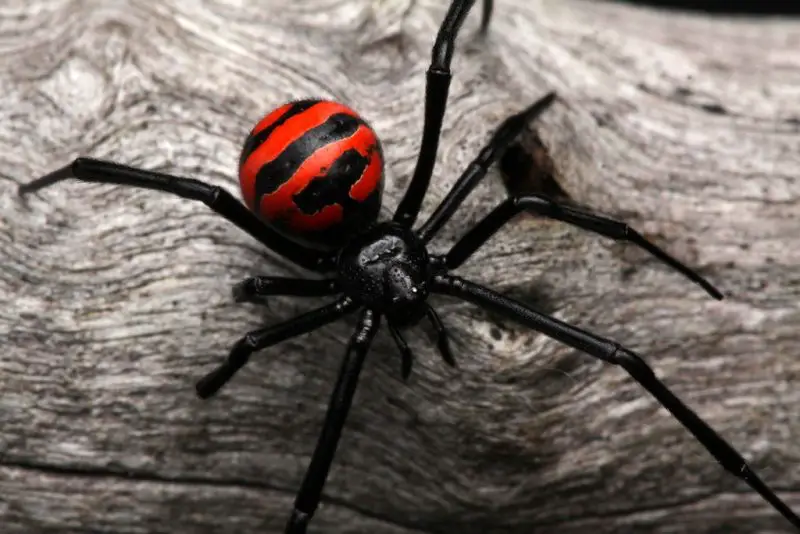
The Black Widow Spider is a highly venomous spider with a glossy black body and a characteristic red hourglass marking on the underside of its abdomen. Females are larger and more dangerous than males, which are smaller and rarely bite.
Black Widows prefer dark, undisturbed locations such as woodpiles, sheds, and garages. They spin irregular, sticky webs where they wait to catch prey. Outdoor encounters usually occur when someone disturbs these hidden spaces.
Bites from Black Widow Spiders are medically significant. Symptoms include intense pain, muscle cramps, nausea, and sweating. Serious reactions are more common in children, the elderly, and individuals with compromised health.
Despite their fearsome reputation, Black Widow Spiders are not aggressive. They usually bite only when threatened or pressed against the skin. Prompt medical attention is recommended if bitten, especially in sensitive individuals.
In Wisconsin, Black Widows are relatively rare but present in the southern regions. They are most active during late summer and early fall, when females reach full maturity.
Brown Recluse Spider (Loxosceles reclusa)
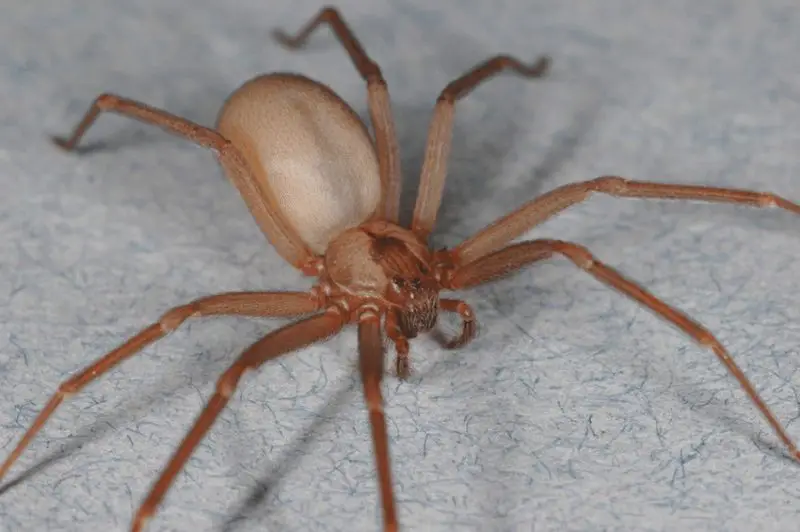
The Brown Recluse Spider is a shy and reclusive species with a brown, violin-shaped marking on its cephalothorax. Its body ranges from light tan to dark brown, and it has long, slender legs. Bites can be serious, although the spider is not typically aggressive.
Brown Recluse Spiders prefer dark, dry, and secluded areas such as basements, attics, closets, and woodpiles. They spin irregular, messy webs and often hide under debris during the day.
Their venom can cause necrotic skin lesions and systemic symptoms in rare cases. Initial bites are often painless, which can delay treatment. Medical evaluation is recommended if a suspicious bite develops redness, swelling, or ulceration.
Encounters with Brown Recluse Spiders in Wisconsin are uncommon since their main range is further south. However, isolated sightings occur, usually involving transported goods or warm microhabitats.
These spiders are nocturnal hunters, feeding on small insects. Awareness and caution in storage areas can help prevent accidental bites.
Deer Tick / Blacklegged Tick (Ixodes scapularis)
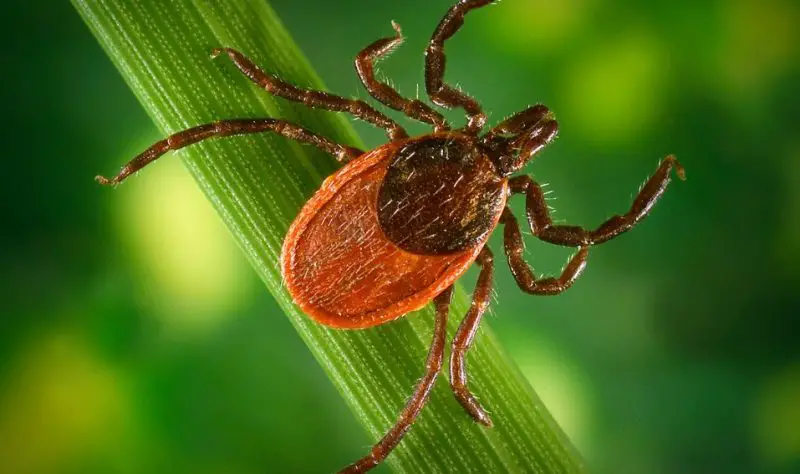
The Deer Tick is a small arachnid, reddish-brown with a dark dorsal shield, known for transmitting Lyme disease. Nymphs are tiny and difficult to spot, making them a significant vector for disease.
Deer Ticks thrive in wooded areas, grassy fields, and edges of forests where hosts such as deer, mice, and birds are abundant. They are commonly found in southern and eastern Wisconsin during spring and summer.
Ticks attach to their hosts and feed on blood, often remaining attached for several days. They can transmit Lyme disease, anaplasmosis, and babesiosis. Early removal of ticks is crucial to reduce infection risk.
Preventative measures include wearing long clothing, using insect repellent, and performing full-body checks after outdoor activities. Pets should also be checked regularly, as they can carry ticks indoors.
Deer Ticks are active during warm months, with nymphs most active in late spring and early summer. Their presence has been increasing in Wisconsin, making awareness essential for outdoor enthusiasts.
Dog Tick (Dermacentor variabilis)
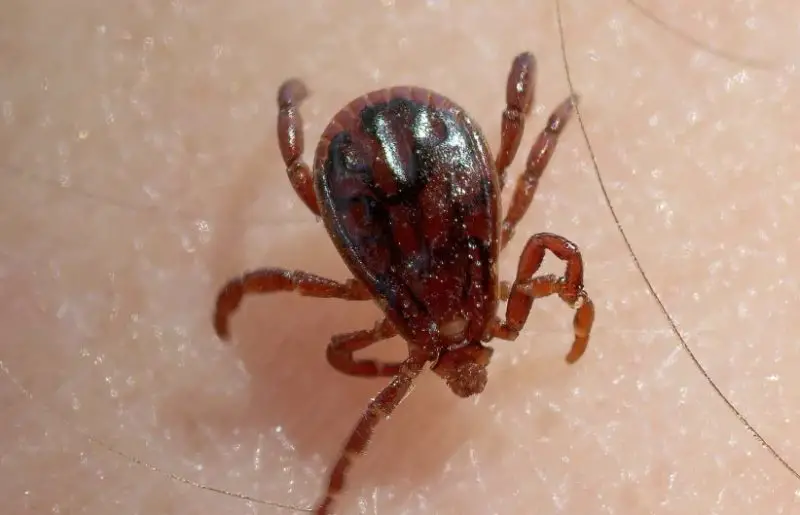
The American Dog Tick is a larger, brownish tick with ornate dorsal patterns. It is commonly found in grassy and wooded areas and is known for transmitting Rocky Mountain spotted fever.
Dog Ticks prefer areas frequented by dogs, other mammals, and humans. They attach to their hosts to feed on blood and can be found in gardens, parks, and along trails.
While less dangerous than Deer Ticks regarding Lyme disease, Dog Ticks carry other pathogens. Their bites can cause localized irritation, itching, or, in rare cases, serious infections.
Dog Ticks are most active in spring and early summer. Preventive measures such as insect repellent, tick checks, and yard maintenance can help minimize encounters.
In Wisconsin, Dog Ticks are widespread, especially in southern and central regions. They pose a significant risk to humans and pets during outdoor activities in tall grass and wooded areas.
Mosquitoes (Aedes and Culex species)
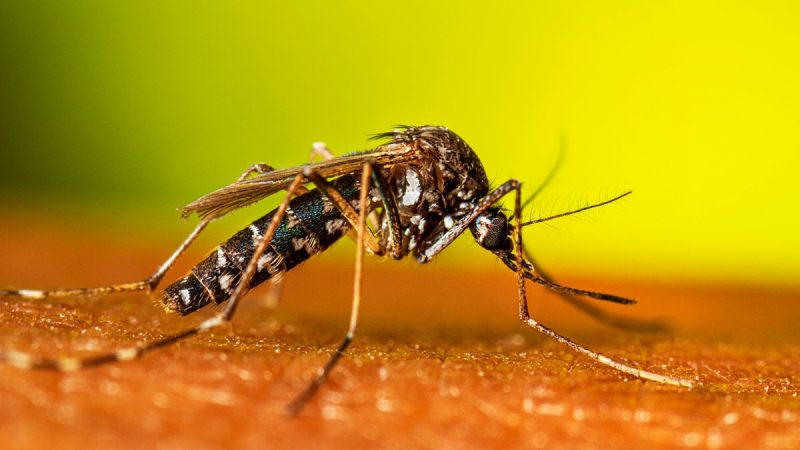
Mosquitoes are small, flying insects with slender bodies and long, thin legs. Aedes and Culex species are most common in Wisconsin and are capable of transmitting diseases such as West Nile virus and Eastern equine encephalitis. Their bites can cause itching, redness, and swelling.
These mosquitoes breed in standing water, including ponds, marshes, birdbaths, and even small containers in yards. Warm, humid conditions in summer create ideal breeding grounds, leading to population spikes during July and August.
While most mosquito bites are harmless, certain species are disease vectors. The West Nile virus, though rare, can lead to severe neurological illness in susceptible individuals, particularly the elderly and immunocompromised.
Mosquitoes are most active during dawn and dusk. Preventive measures include wearing long sleeves, using insect repellent with DEET or picaridin, and eliminating standing water around homes.
In Wisconsin, Aedes mosquitoes are common across the state, while Culex species tend to be more prevalent in southern and urban areas. Monitoring local mosquito activity is important during peak summer months.
European Hornet (Vespa crabro)
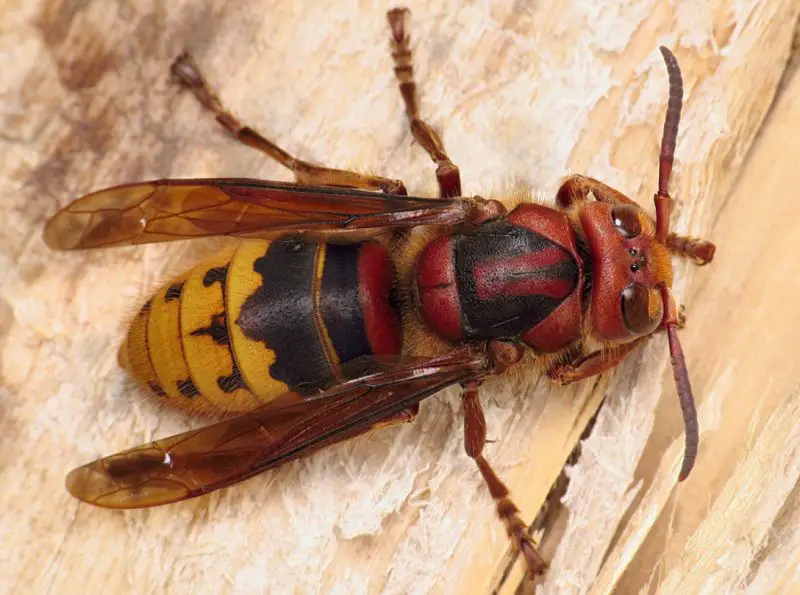
The European Hornet is a large, brown and yellow wasp with reddish-brown heads. They are social insects living in colonies inside hollow trees, wall voids, or attics. Their stings are painful and can trigger allergic reactions in sensitive individuals.
European Hornets are active during warm months, typically from late spring to early fall. They forage for nectar, fruit, and other insects and may occasionally enter homes in search of light or food.
Their sting injects venom that causes localized pain, swelling, and redness. Multiple stings or allergic reactions can be dangerous, especially to children, the elderly, or those with known allergies.
Despite their intimidating size, European Hornets are generally not aggressive unless their nest is threatened. They play a role in controlling other insect populations in Wisconsin ecosystems.
In Wisconsin, European Hornets are more common in the southern and central parts of the state. Homeowners should check for nests in hollow trees or attics to prevent stings.
Paper Wasps (Polistes species)
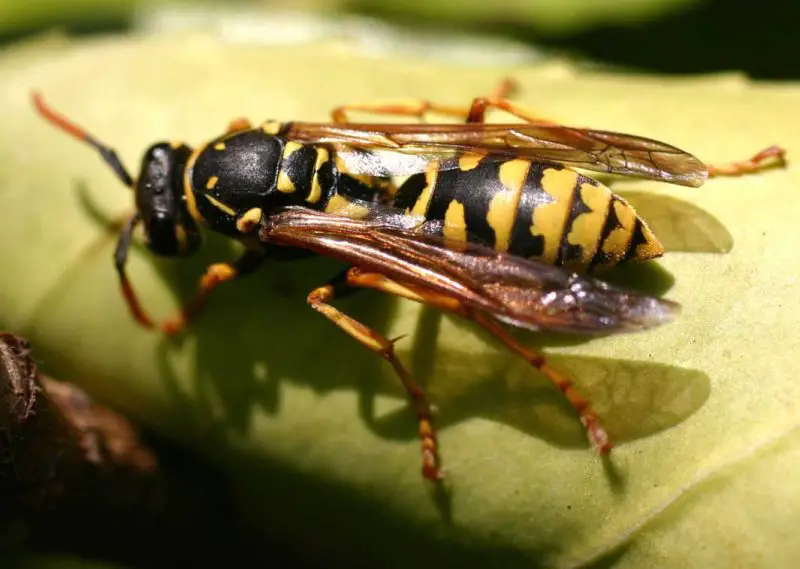
Paper Wasps are medium-sized wasps with slender bodies and long legs. Their coloration ranges from brown to reddish with yellow markings. They build umbrella-shaped nests made of paper-like material in sheltered areas.
These wasps prefer to build nests under eaves, in garages, sheds, and on tree branches. They are social insects and can become defensive if someone approaches their nest.
Paper Wasp stings are painful and may cause swelling, redness, and itching. Allergic reactions are possible, making prompt medical attention necessary for sensitive individuals.
Paper Wasps are beneficial predators, feeding on caterpillars and other pest insects. Despite this, caution is necessary when encountering nests near homes.
In Wisconsin, Paper Wasps are widespread throughout the state. Nesting activity peaks in mid-summer, making July and August the months with the highest risk of stings.
Yellowjackets (Vespula species)
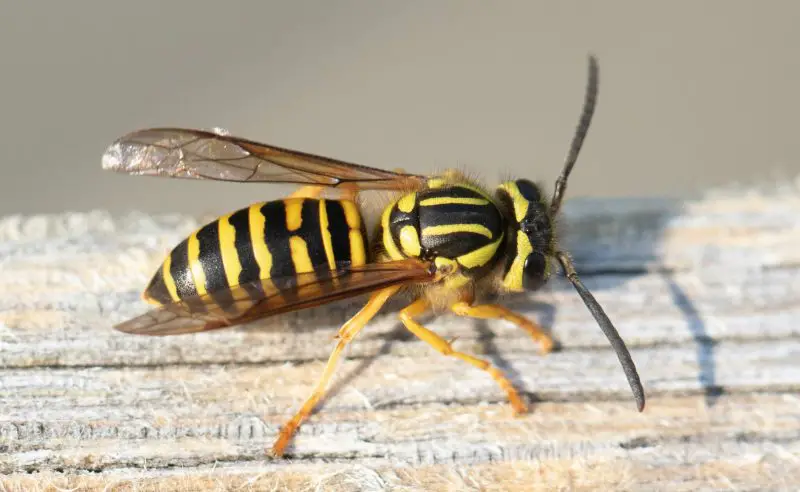
Yellowjackets are small, aggressive wasps with bright yellow and black banded bodies. They are social insects, living in colonies in underground burrows, tree stumps, or wall cavities. Their stings are particularly painful and can be dangerous to those with allergies.
Yellowjackets forage for sugary foods and protein, frequently approaching human food during picnics or outdoor events. They are highly defensive of their nests, which can result in multiple stings if disturbed.
Their venom can cause immediate pain, swelling, and redness. In allergic individuals, stings can lead to severe reactions, including anaphylaxis. Multiple stings from a disturbed colony may also be medically significant.
Yellowjackets play an ecological role by controlling pest insects and scavenging. However, their aggressive nature requires caution in populated areas or outdoor gatherings.
In Wisconsin, Yellowjackets are most active from late summer into early fall. Their nests are usually in the ground or protected cavities, so awareness is important when walking or gardening.
Japanese Giant Hornet (Vespa mandarinia) – Rare sightings
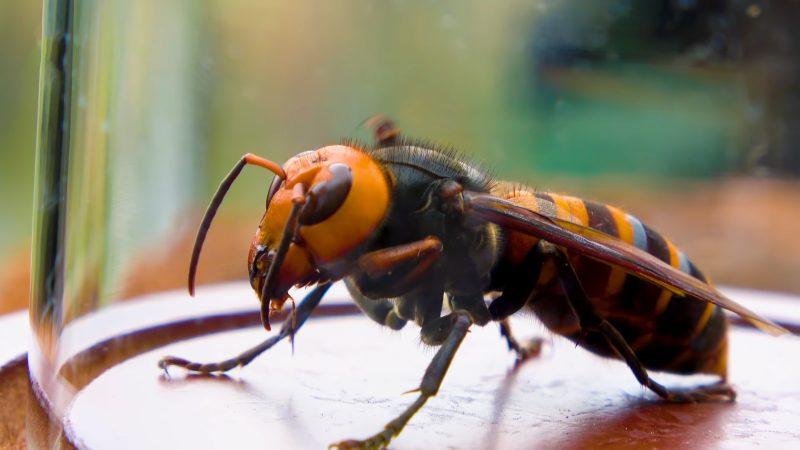
The Japanese Giant Hornet is a large hornet with yellow-orange heads and striped black-and-yellow abdomens. It is highly venomous and capable of delivering painful stings. While sightings in Wisconsin are rare, awareness is important due to potential danger.
These hornets are typically solitary foragers but form small colonies. They feed on insects and can be attracted to protein sources, such as meat or sugary foods.
Stings from Japanese Giant Hornets can cause severe pain, localized swelling, and allergic reactions. In rare cases, multiple stings or allergic responses can be life-threatening. Prompt medical attention is recommended if stung.
The species is native to East Asia, and established populations in Wisconsin are not confirmed. Occasional sightings may result from accidental transport or isolated invasive incidents.
Japanese Giant Hornets are active during warm months, especially in late summer. People should exercise caution if encountering large hornets that resemble this species.
Kissing Bugs (Triatominae species)
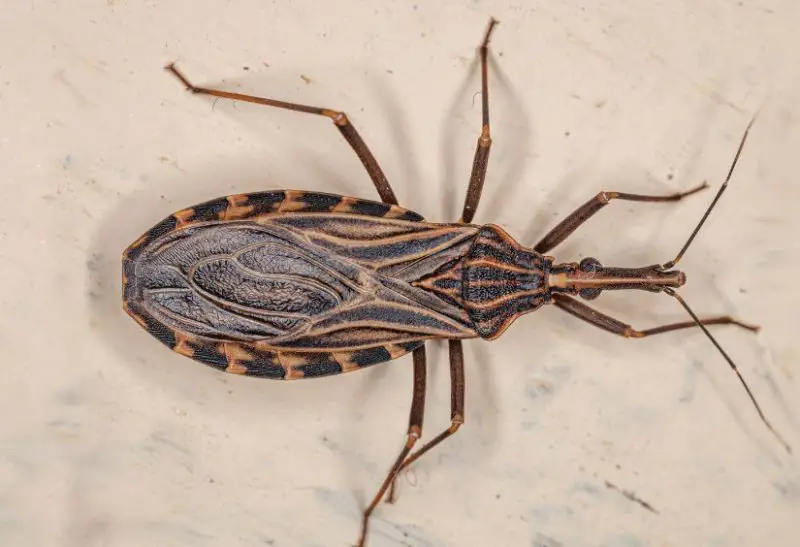
Kissing Bugs are blood-feeding insects with elongated bodies and dark coloration, often marked with orange or red patterns along the edges. They are named for their tendency to bite near the lips or face while people sleep.
These bugs are nocturnal and typically hide in cracks, under porches, or in animal nests during the day. In Wisconsin, they are rare, but occasional sightings occur, often linked to imported goods or pets.
Kissing Bugs can carry the parasite Trypanosoma cruzi, which causes Chagas disease in humans. Transmission occurs when infected feces enter a bite wound or mucous membranes. Cases in Wisconsin are extremely rare.
Bites may cause minor swelling, itching, or allergic reactions. While dangerous in endemic regions, the risk in Wisconsin is minimal, but awareness is recommended when encountering unusual insects.
Kissing Bugs are most active during warm summer nights. Observing these insects without handling them is the safest approach, and reported sightings should be documented for monitoring.
Brown Marmorated Stink Bug (Halyomorpha halys)
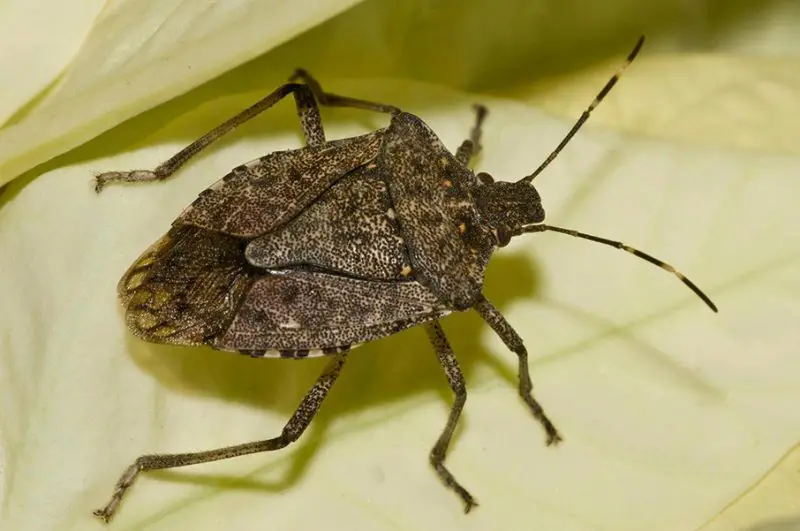
The Brown Marmorated Stink Bug is an invasive insect with a shield-shaped body and mottled brown coloration. When disturbed, it releases a pungent odor as a defense mechanism.
These bugs are agricultural pests, feeding on fruits, vegetables, and ornamental plants. They enter homes in large numbers during fall seeking shelter for overwintering.
While not highly dangerous, their presence can cause allergic skin reactions in sensitive individuals and trigger asthma or respiratory irritation when crushed.
Brown Marmorated Stink Bugs do not bite or sting humans, but their strong odor and large infestations can make them a nuisance. Handling them carefully is recommended.
In Wisconsin, this species is widespread, especially in urban and suburban areas. Their numbers peak in late summer and fall as they seek indoor shelter.
Cicada Killer Wasp (Sphecius speciosus)
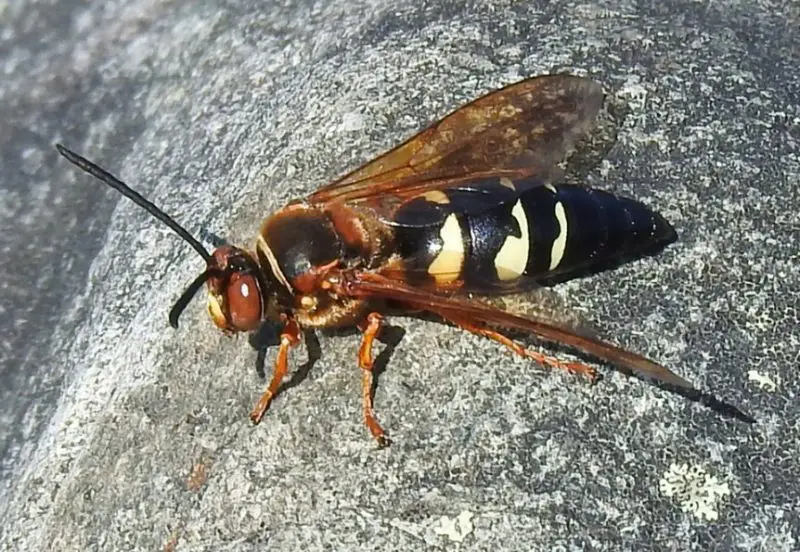
Cicada Killer Wasps are large, solitary wasps with orange-brown bodies and black markings. Females dig burrows in sandy soil to lay eggs near paralyzed cicadas, which serve as food for their larvae.
These wasps are common in open, sunny areas such as lawns, gardens, and fields. They are usually non-aggressive, focusing on hunting cicadas rather than humans.
Their sting is painful but rarely dangerous. Reactions are generally limited to temporary swelling and redness, unless the person is allergic.
Cicada Killer Wasps play a beneficial role by controlling cicada populations. Their impressive size can intimidate people, but they typically ignore humans if left undisturbed.
In Wisconsin, these wasps are most active during mid to late summer. Observers can often see females flying low near their burrows while transporting cicadas.
European Earwig (Forficula auricularia)
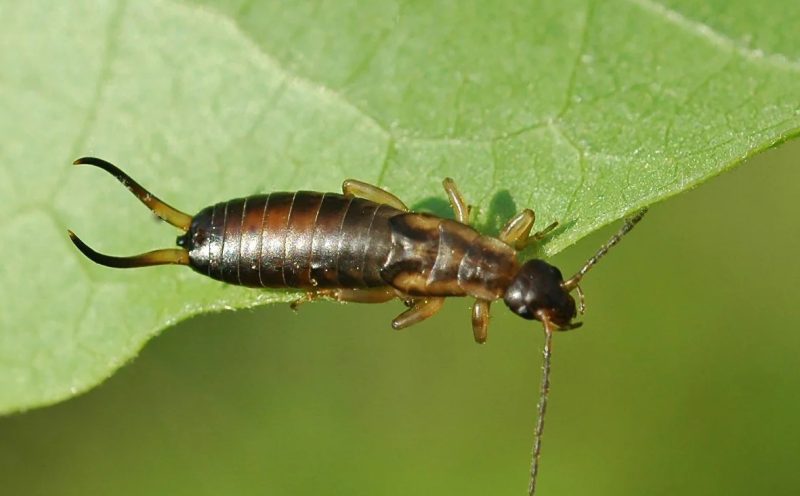
European Earwigs are elongated insects with dark brown bodies and forceps-like cerci at the rear. They are nocturnal and hide in moist, sheltered places during the day.
Earwigs feed on a variety of plants and insects. They are more of a nuisance than a direct threat, though their pincers can deliver a mild pinch when handled.
Bites are rare, and the main concern is minor skin irritation or allergic reactions in sensitive individuals. Earwigs do not carry significant diseases.
These insects are active in gardens, flower beds, under rocks, or inside mulch. Moisture and debris create ideal habitats for them to thrive.
In Wisconsin, European Earwigs are widespread, particularly in urban gardens and agricultural areas. They are most noticeable during late spring and summer evenings.
Giant Water Bug (Lethocerus americanus)
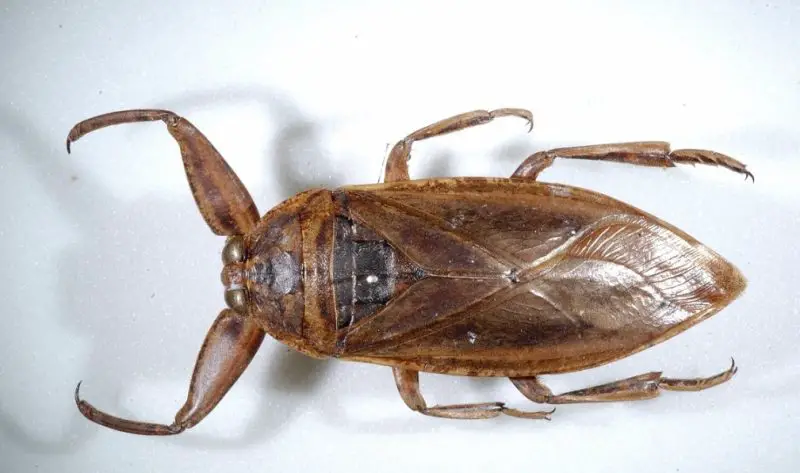
Giant Water Bugs, also called “toe-biters,” are large aquatic insects with flat, oval bodies and raptorial front legs used for capturing prey. They inhabit ponds, lakes, and slow-moving streams.
These bugs feed on small fish, amphibians, and insects. Their powerful bite injects digestive enzymes, causing intense pain if handled or provoked.
While not venomous, bites can be extremely painful and may cause swelling, redness, and temporary numbness. They rarely bite unless picked up or threatened.
Giant Water Bugs are primarily nocturnal hunters, often lurking near the water’s surface. They play an important role in controlling aquatic insect populations.
In Wisconsin, they are found statewide in freshwater habitats. Encounters with humans are uncommon unless swimming or handling aquatic vegetation.
Assassin Bug (Reduviidae family)
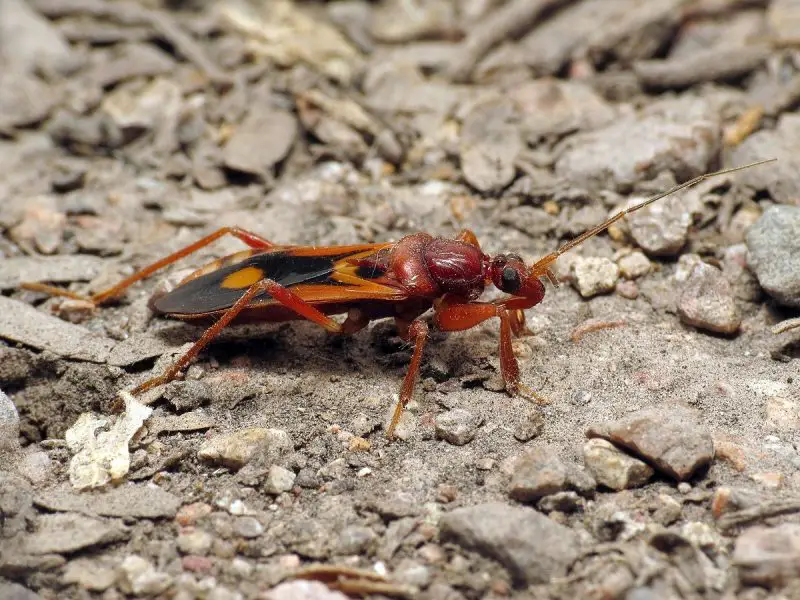
Assassin Bugs are predatory insects with elongated bodies, narrow heads, and strong piercing mouthparts. They feed on other insects and are known for their stealthy hunting techniques.
These bugs are typically found in gardens, fields, and forest edges. They hide among plants and wait to ambush prey. Some species are attracted to lights at night.
Assassin Bug bites can be painful and cause localized swelling, redness, and itching. Rarely, they may transmit Trypanosoma cruzi in endemic regions, but this risk is negligible in Wisconsin.
They are beneficial predators, helping control pest populations. Despite their helpful role, caution is advised when handling or accidentally disturbing them.
In Wisconsin, Assassin Bugs are scattered across the state. Their activity peaks during summer, making encounters more likely in gardens and wooded areas.
Spotted Lanternfly (Lycorma delicatula)
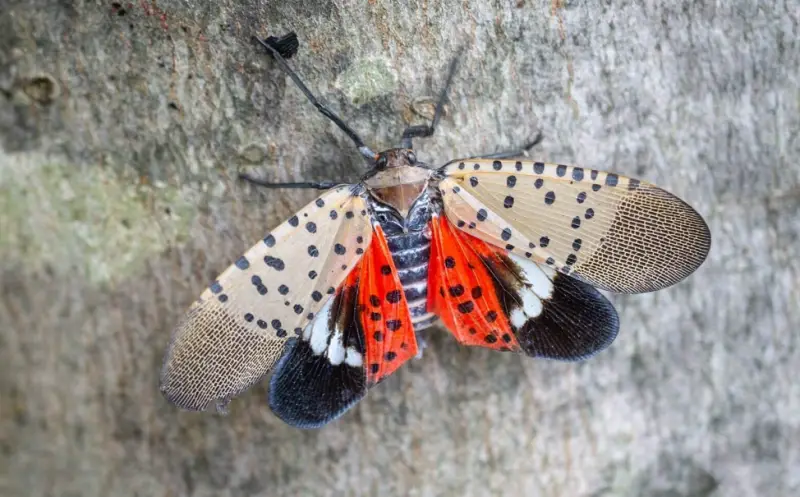
The Spotted Lanternfly is an invasive planthopper with grey wings, black spots, and bright red hind wings. It feeds on sap from trees, grapes, and ornamental plants, causing significant agricultural damage.
These insects prefer tree-of-heaven but can infest various trees and crops. They are not aggressive toward humans but can trigger mild skin irritation in sensitive individuals.
While not highly dangerous to people, Spotted Lanternflies can cause economic harm by damaging crops and trees. They secrete a sugary substance called honeydew, which promotes mold growth.
Adults are active from late summer to early fall, laying eggs on tree bark, outdoor furniture, and vehicles. Early detection is important to control their spread.
In Wisconsin, the Spotted Lanternfly has been reported in limited areas. Monitoring and removal efforts are ongoing to prevent establishment and protect local agriculture.
Blister Beetles (Epicauta spp.)
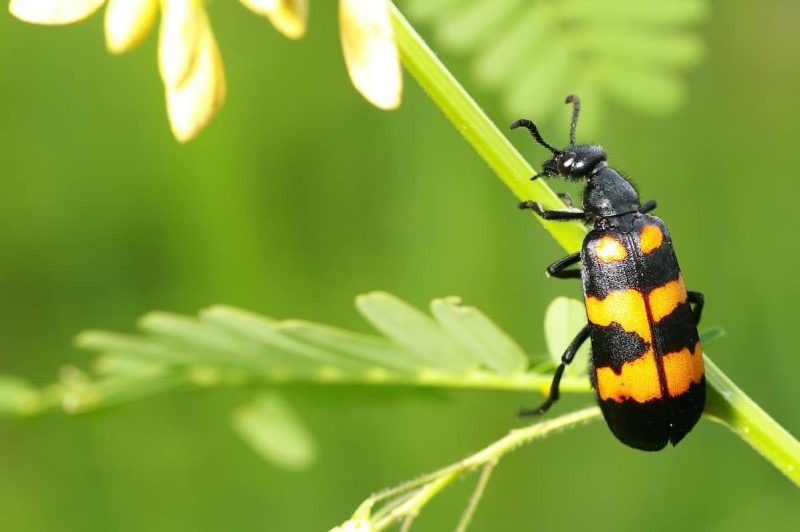
Blister Beetles are elongated insects, often black or gray, sometimes with yellow or orange markings. They produce cantharidin, a chemical that can cause painful blisters on contact with skin.
These beetles are commonly found in gardens, fields, and around flowering plants. They feed on foliage, flowers, and sometimes crops like alfalfa.
Contact with Blister Beetles can result in skin irritation, redness, and blistering. Ingestion of crushed beetles can be toxic to livestock, making them a concern for farmers.
Blister Beetles are generally not aggressive and only release cantharidin when handled or crushed. Protective gloves and careful handling are recommended when encountering them.
In Wisconsin, Blister Beetles are scattered throughout agricultural regions, especially during mid to late summer when adults are most active.
European Carpenter Ant (Camponotus spp.)
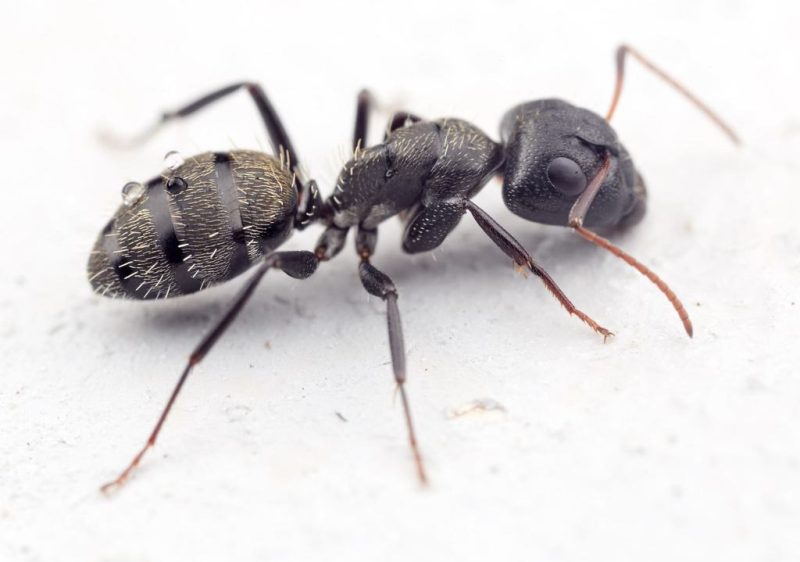
European Carpenter Ants are large ants with black or dark brown bodies. They excavate wood to build nests, potentially damaging homes or structures over time.
These ants are common in forests, urban gardens, and wooden structures. They feed on sugary substances and insects and often forage at night.
While they rarely bite humans, European Carpenter Ants can deliver a mild, painful bite if provoked. They do not inject venom but can cause minor irritation.
Carpenter ants are important in natural ecosystems for recycling dead wood and preying on other insects. In homes, however, infestations require careful management to prevent structural damage.
In Wisconsin, Carpenter Ants are widespread, particularly in older buildings and wooded areas. Nest monitoring and removal are recommended to reduce risks.
Fire Ants (Solenopsis invicta)
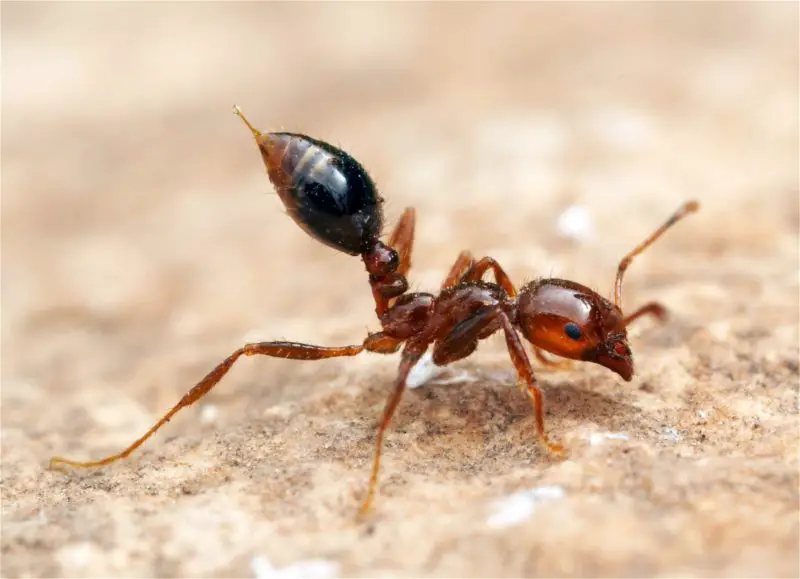
Fire Ants are small, reddish-brown ants known for their aggressive stings. Multiple stings can cause intense pain, swelling, and in allergic individuals, potentially severe reactions.
They build mounds in open, sunny areas such as lawns, pastures, and gardens. Fire Ants are highly territorial and defend their colonies vigorously.
Their venom contains alkaloids that cause burning sensations, itching, and pustule formation at sting sites. Severe allergic reactions require immediate medical attention.
Fire Ants are invasive and more common in southern U.S. states. In Wisconsin, sightings are rare and typically limited to small, isolated infestations.
These ants are most active during warm months and are more aggressive when their nests are disturbed. Preventive measures include inspecting soil and treating infested areas professionally.
FAQs About Dangerous Bugs in Wisconsin
What are the most dangerous bugs in Wisconsin?
Wisconsin hosts a variety of potentially harmful insects, including Velvet Ants, Black Widow Spiders, Brown Recluse Spiders, Deer Ticks, Dog Ticks, European Hornets, Yellowjackets, Paper Wasps, and Mosquitoes. While most bites or stings are not fatal, some can trigger severe allergic reactions or transmit diseases such as Lyme disease or West Nile virus.
Does Wisconsin have Velvet Ants?
Yes, Velvet Ants, also called “cow killers,” are found in southern and central Wisconsin. The wingless females have bright red or orange fuzzy bodies and deliver extremely painful stings. They are solitary and ground-dwelling, typically active during summer months.
Are Black Widow and Brown Recluse Spiders common in Wisconsin?
Black Widows are rare but present, mainly in southern Wisconsin, and are more likely to be found in dark, undisturbed locations like woodpiles or sheds. Brown Recluse Spiders are very uncommon in Wisconsin; most reported cases are due to transported goods. Both spiders are venomous, and bites require medical attention.
Which ticks in Wisconsin can transmit diseases?
The Deer Tick (Blacklegged Tick) and Dog Tick are the primary species. Deer Ticks can transmit Lyme disease, anaplasmosis, and babesiosis, while Dog Ticks can carry Rocky Mountain spotted fever. Prevention involves wearing protective clothing, using repellent, and performing tick checks after outdoor activities.
Are mosquitoes dangerous in Wisconsin?
Yes, mosquitoes, particularly Aedes and Culex species, can carry West Nile virus and Eastern equine encephalitis. While most bites are harmless, vulnerable populations, including the elderly and immunocompromised, should take precautions by using repellents and avoiding peak mosquito activity times at dawn and dusk.
Do European Hornets and Yellowjackets pose a serious threat?
Both species are aggressive and can deliver painful stings. European Hornets live in hollow trees or attics, while Yellowjackets often nest underground or in cavities. Allergic reactions can be severe, and multiple stings from a disturbed nest may require medical attention.
What should I do if I encounter a paper wasp or cicada killer wasp?
Observe them from a safe distance. Paper Wasps and Cicada Killer Wasps are generally non-aggressive unless their nest is threatened. Stings are painful but rarely dangerous unless the person is allergic. Protective clothing and caution near nests are recommended.
Are invasive species like Spotted Lanternfly and Brown Marmorated Stink Bug harmful to humans?
These species are not highly dangerous to humans but can cause mild allergic reactions or respiratory irritation in sensitive individuals. Their main threat is to agriculture and plants. Early detection and removal are important to prevent spread.
Can Assassin Bugs, Blister Beetles, and Giant Water Bugs harm humans?
Yes, but risks vary. Assassin Bugs deliver painful bites; Blister Beetles release cantharidin, causing skin blisters; and Giant Water Bugs have powerful bites that cause intense pain. In all cases, handling them should be avoided.
Are fire ants a concern in Wisconsin?
Fire Ants are rare in southern Wisconsin. They deliver multiple painful stings that can cause severe allergic reactions. Their nests are aggressive to disturb, and preventive measures include monitoring soil and professional treatment if infestations are detected.

